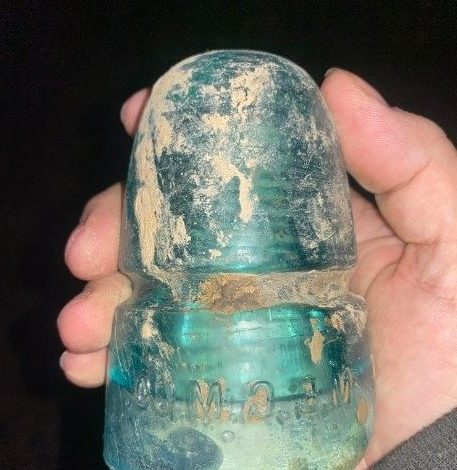“I found this and consider myself lucky. Who knows what it is? To tell you the truth about these unsung heroes of the communications world:

ADVERTISEMENT
“I found this and consider myself lucky. Who knows what it is? To tell you the truth about these unsung heroes of the communications world:
isolators, those strange-looking devices, perform a vital function.Their purpose is to prevent the electrical wires they support from making small talk with the mast or, God forbid, the earth below. If they didn’t do their job, all that electricity (or valuable phone calls) would simply be wasted. Imagine trying to make a long-distance call and your voice stops after a few hundred meters. It’s not fun, is it?
You’ll find a treasure trove of insulation styles and colors.While many of the oldest were made of glass or porcelain, some were made of wood and glass, animal parts (yes, you read that right), and even stranger materials. Size also plays a role: smaller insulators hung out with the telephone and telegraph masses, while their larger counterparts had fun with high-voltage cables. It’s like a VIP area for insulators, depending on the voltage!
Source: Etsy
ADVERTISEMENT

For power lines, the higher the voltage, the more insulator is needed. Because?This is because electricity can be a flash, and if the voltage is high enough, it may simply jump a significant distance, a phenomenon known as “flashover.” Insulators with wide “shield” discs and wide floor skirts act like jumpers in a nightclub, keeping the wire an arm’s length from the pole so that electrifying dance move doesn’t happen.
Believe it or not, there is a collection of insulators! The real boom came in the 1960s when utility and energy companies began laying their cables. Many of these old insulators were unable to join the underground party and therefore ended up in the “disposal” bin.But as the saying goes: one man’s trash is another man’s treasure.
collectors are a diverse group. Some do it for aesthetic reasons, decorating their window sills and gardens with colorful glass pieces to add a touch of sparkle to their surroundings. Others are more specific in their tastes and look for specific types of insulators. Prizes can range from free gifts to incredible sums of money.Rare specimens can cost tens of thousands of dollars, but there are also many inexpensive options. You could find one for less than a dollar or, if you’re lucky, even get one for free at flea markets.

ADVERTISEMENT
It is worth noting that most insulators in the hands of collectors are between 70 and 145 years old, and some types have not been manufactured since the early 20th century. Anything old that is no longer in production tends to become a collector’s item, and insulators are no exception. SoNext time you see one of these fancy glass or porcelain insulators on a telephone pole, take a moment to appreciate the crucial role they have played in the history of communications. They may seem like relics of the past, but they have left an indelible mark on our ability to connect with one another, whether through a phone call or a lightning-fast text message. And who knows, maybe you’ll be inspired to start your own collection and join the
Insulator enthusiasts who discover beauty and history in these humble artifacts.




